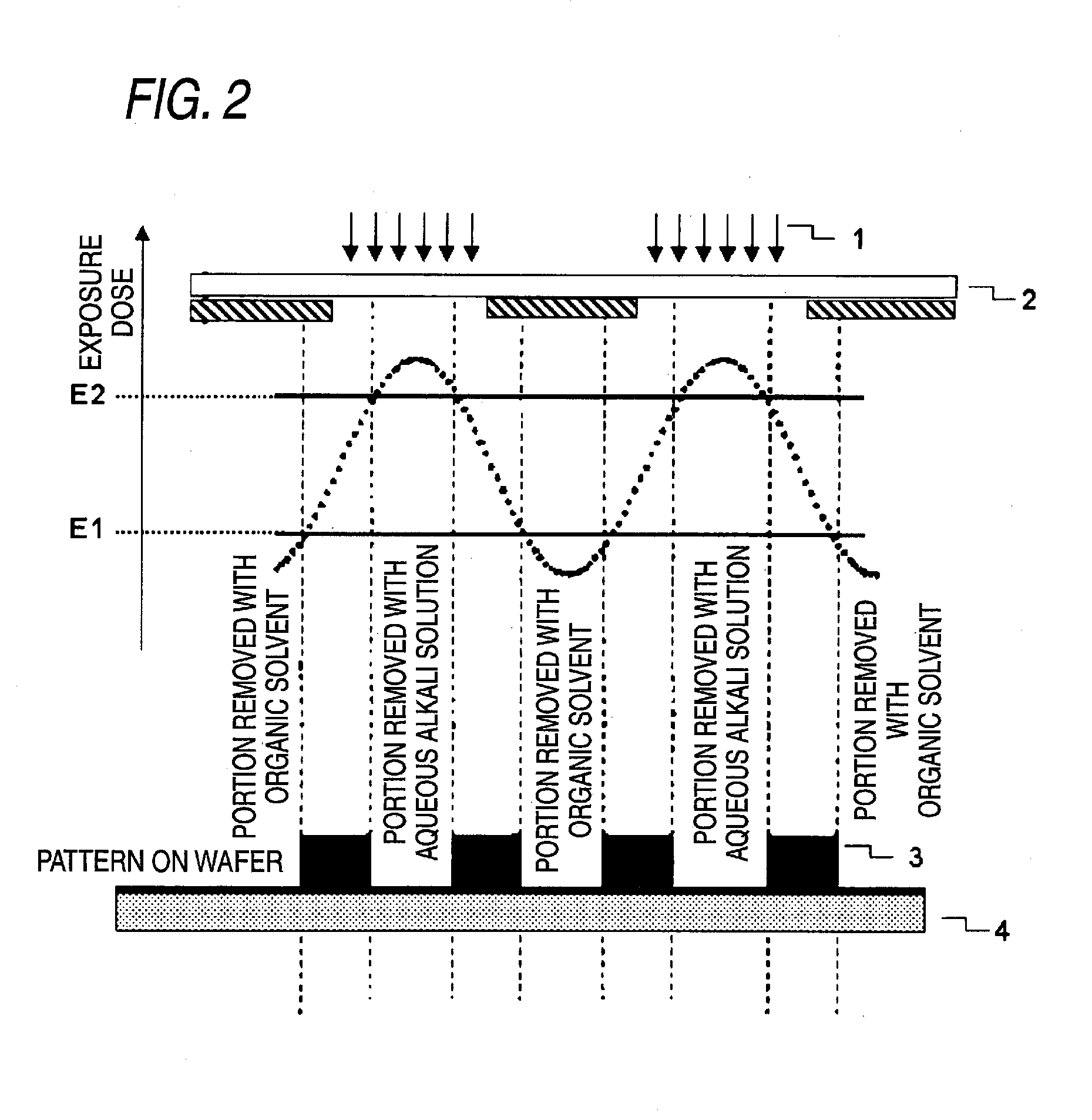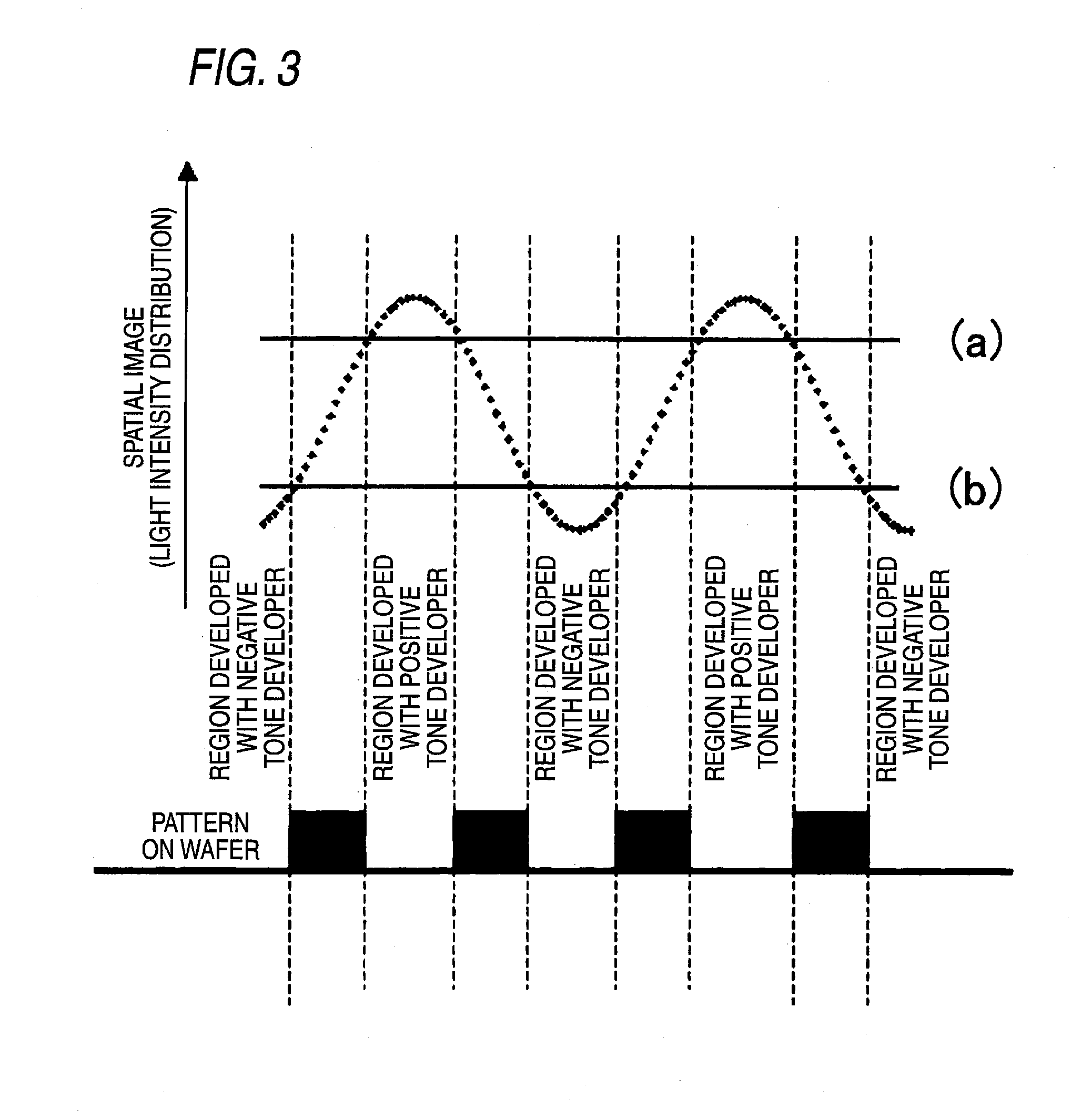Resist composition for negative tone development and pattern forming method using the same
a composition and tone technology, applied in the field of resist composition for negative tone development, can solve the problems of reducing optical contrast, difficult to find out the appropriate combination of resist composition and developer, and reducing the uniformity of the pattern dimension in the plane, so as to enhance the in-plane uniformity of the pattern dimension, and reduce the roughness of the line edge
- Summary
- Abstract
- Description
- Claims
- Application Information
AI Technical Summary
Benefits of technology
Problems solved by technology
Method used
Image
Examples
synthesis example 1 (
Synthesis of Resin (A1))
[0535]Under a nitrogen flow, 20 g of a mixed solvent of propylene glycol monomethyl ether acetate and propylene glycol monomethyl ether in a mass ratio of 6 / 4 was charged into a three-neck flask and heated at 80° C. (Solvent 1). Separately, γ-butyrolactone methacrylate, hydroxyadamantane methacrylate and 2-methyl-2-adamantyl methacrylate in a molar ratio of 40 / 25 / 35 were dissolved in a mixed solvent of propylene glycol monomethyl ether acetate and propylene glycol monomethyl ether in a mass ratio of 6 / 4 to prepare a monomer solution (200 g) having a concentration of 22 mass %. Subsequently, a polymerization initiator V-601 (produced by Wako Pure Chemical Industries, Ltd.) in a concentration of 8 mol % based on the monomers was added to and dissolved in the monomer solution, and the obtained solution was added dropwise to Solvent 1 over 6 hours. After the completion of dropwise addition, the reaction was further allowed to proceed at 80° C. for 2 hours. The re...
example 1
[0546]An organic antireflection film AR46 (produced by Rohm and Haas Company) was applied on a silicon wafer and baked at 215° C. for 60 seconds to form a 29 nm-thick antireflection film, and Resist Composition (Ra1) was applied thereon and baked at 120° C. for 60 seconds to form a 150 nm-thick resist film. The obtained wafer was subjected to pattern exposure using an ArF excimer laser scanner (NA: 0.75). Thereafter, the resist film was heated at 120° C. for 60 seconds, developed with butyl acetate (negative tone developer) for 30 seconds (negative tone development), and rinsed with 1-hexanol, and the wafer was then spun at a rotational speed of 4,000 rpm for 30 seconds to obtain a 150-nm (1:1) line-and-space resist pattern.
example 18
[0548]An organic antireflection film AR46 (produced by Rohm and Haas Company) was applied on a silicon wafer and baked at 215° C. for 60 seconds to form a 29 nm-thick antireflection film, and Resist Composition (Ra11) was applied thereon and baked at 120° C. for 60 seconds to form a 150 nm-thick resist film. The obtained wafer was subjected to pattern exposure using an ArF excimer laser scanner (NA: 0.75). Thereafter, the resist film was heated at 120° C. for 60 seconds, developed with an aqueous tetramethylammonium hydroxide solution (2.38 mass %) (positive tone developer) for 30 seconds (positive tone development), and rinsed with pure water to obtain a pattern having a pitch of 600 nm and a line width of 450 nm. Furthermore, the resist film was developed with butyl acetate (negative tone developer) for 30 seconds (negative tone development) and rinsed with 1-hexanol, and the wafer was then spun at a rotational speed of 4,000 rpm for 30 seconds to obtain a 150-nm (1:1) line-and-sp...
PUM
| Property | Measurement | Unit |
|---|---|---|
| acid dissociation index pKa | aaaaa | aaaaa |
| vapor pressure | aaaaa | aaaaa |
| wavelength | aaaaa | aaaaa |
Abstract
Description
Claims
Application Information
 Login to View More
Login to View More - R&D
- Intellectual Property
- Life Sciences
- Materials
- Tech Scout
- Unparalleled Data Quality
- Higher Quality Content
- 60% Fewer Hallucinations
Browse by: Latest US Patents, China's latest patents, Technical Efficacy Thesaurus, Application Domain, Technology Topic, Popular Technical Reports.
© 2025 PatSnap. All rights reserved.Legal|Privacy policy|Modern Slavery Act Transparency Statement|Sitemap|About US| Contact US: help@patsnap.com



